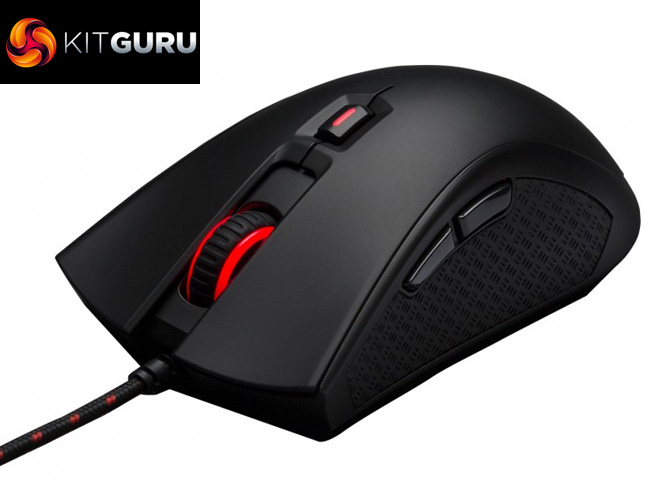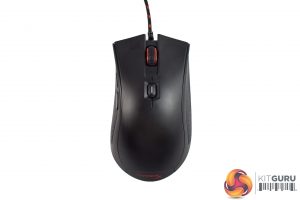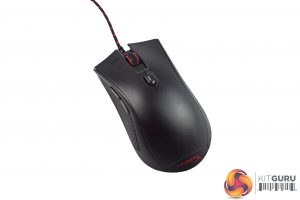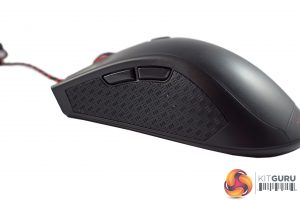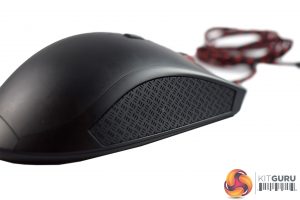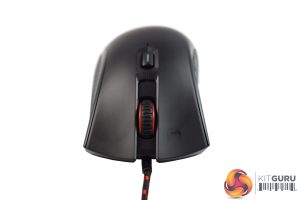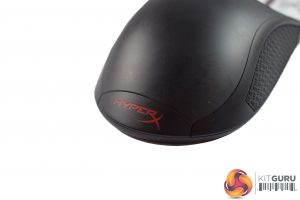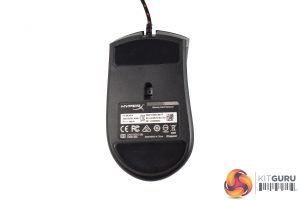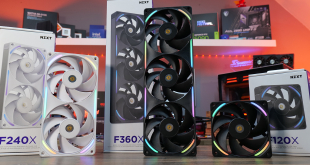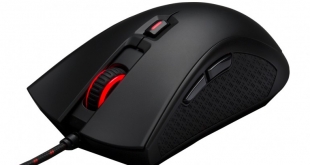
Over the last few months, we have seen HyperX gradually enlarging its scope and manufacturing new products not typically associated with its brand. First was the award-winning Alloy FPS keyboard, and today we are looking at the company's first mouse – the Pulsefire FPS. Designed to be a simple, no-frills gaming mouse, is it a good buy at £49.99?
Since the HyperX Pulsefire FPS was first announced back at CES 2017, I must admit I have been looking forward to getting one in for review. I gave the Alloy FPS keyboard 9/10 back in November, and that was HyperX's first keyboard.
Specification
- Sensor: PixArt PMW3310
- Resolution: 400/800/1600/3200 DPI
- Speed: 130ips
- Acceleration: 30g
- Buttons: 6
- Left / Right switches: Omron
- Left / Right durability: 20 million clicks
- Backlight: Single colour, red
- Connection type USB: 2.0
- Polling rate: 1000Hz
- USB data format: 16 bits/axis
- Dynamic coefficient of friction: 0.21µ1
- Static coefficient of friction: 0.16µ11
- Cable type: Braided
- Weight (without cable): 95g
- Weight (with cable): 120g
- Cable length: 1.8m
- Dimensions: Length: 127.54mm, Height: 41.91mm, Width: 71.07mm
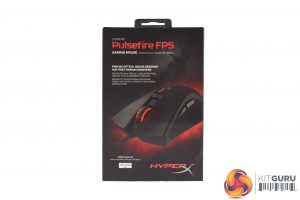
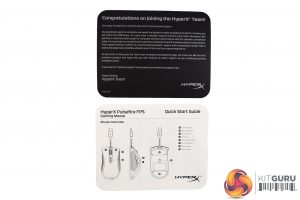
The HyperX Pulsefire FPS ships in a familiar-looking box, complete with HyperX's signature black-and-red colour scheme.
Inside the box, the only accessories are two small leaflets: one is a greeting card, the other a quick-start guide.
Getting our first look at the mouse, it may look a touch familiar. That would be because it is designed to be a lightweight ergonomic mouse, not dissimilar to the Razer Deathadder Elite and ROG Gladius II, to name just two examples.
That does mean it is exclusively for right-handers, but it should offer good levels of comfort. It is also nice and light at 95g (not including the cable), so fast movements should not be hindered either.
The left-hand side of the mouse features the standard ‘forward' and ‘back' buttons, as well as a rubber grip section.
The right-hand side of the mouse also sports some of this textured rubber, but that is it.
At the top of the mouse we find the scroll wheel and a single DPI cycle button. Incidentally, the scroll wheel is one of two zones which light up.
The second of these zones is the small Hyperx logo at the bottom of the mouse, though it is worth mentioning that both zones only light up red as this is not a RGB mouse.
Flipping the Pulsefire over, we get a good look at the two large Teflon glide pads. The optical sensor is also visible here, and that is the Pixart PMW 3310. I talk about this choice of sensor and its performance on the next page.
Lastly, the cable is braided and measures 1.8m long.To test the Pulsefire, I used it as my daily driver for a week, giving me plenty of time to get an idea for how it feels and performs. During this time, I used it while performing a variety of different tasks, including gaming, photo editing and general usage.
Usually, I like to look at software first, but the Pulsefire does not actually come with any software – it is truly ‘plug-and-play.'
This does have a few consequences, though. First of all, the lighting is a fixed, red-only colour as the Pulsefire is not RGB-capable. It is not an issue for me, and I can't imagine it will be a problem for many, but it is worth pointing out.
Secondly, the lack of software also means the DPI stages are locked at 400/800/1600/3200. I'll talk about this a bit more below, but it is also knowing that for each DPI stage, the DPI cycle button lights up a different colour (white, red, blue and yellow respectively). These colours are also not programmable.
All-in-all, though, I don't think the lack of software hurts the Pulsefire. It is clearly designed as a simple FPS gaming mouse that ‘just works' right out of the box. If you're looking for fancy RGB lighting and intricate software control, this mouse is not for you.
Now, let's talk about performance. I'll start with a question many of you are probably thinking – why did HyperX use the older PMW 3310 sensor when the newer PMW 3360 is currently the king of the crop? It is definitely a good question, so I got in touch with HyperX to ask them about it.
The answer is that, simply put, HyperX didn't feel the need to use a PMW 3360. According to their data, the vast majority of gamers simply don't exceed 3200 DPI (the Pulsefire's limit) so, from their perspective, it doesn't make sense to spend extra money on the latest sensor when 90% of gamers won't benefit from it.
I can definitely understand this approach (though funnily enough, I'm actually in the 10% of those who exceed 3200 DPI) given the Pulsefire's positioning as a simple-yet-effective FPS gaming mouse. In-practice, too, the PMW 3310 sensor is still excellent, with no unwanted prediction or acceleration being noticeable – I found it tracks perfectly.
Having the DPI presets locked at 400/800/1600/3200 does remove an element of control, but these presets give a good range of sensitivities and I was happy using them day-to-day. Having the DPI cycle button illuminate a different colour for each DPI stage is also handy, just by giving a visual indicator of which stage you are currently using. Personally speaking, I would prefer two DPI-switch buttons instead of a single cycle button, but that is only a minor point.
So, now that that's out of the way, another key area for the Pulsefire is comfort and ergonomics. After all, it is no good designing a simple FPS mouse if no one will wants to use it on a daily basis because it is uncomfortable.
However, that is certainly not the case here, as the HyperX Pulsefire is very comfortable, even more so than the Deathadder Elite in my opinion – and the Deathadder Elite is currently my daily mouse of choice, so that is definitely saying something. The Pulsefire does have quite a ‘bump' to it, which suits palm grip particularly well, but I had no issues using a claw grip either.
The two side buttons are also within very easy reach, something which is also important to me as I map these buttons to my grenades or melee function in-game. Lastly, the rubber grip sections also work very well, and I did not feel I was losing control of the mouse at any point, even after a few long sessions of Ghost Recon: Wildlands. All-in-all, my hand felt right at home when using the Pulsefire.
Other than that, there is not a lot to discuss. Clearly, the Pulsefire is designed to be a fast, lightweight and responsive gaming mouse without any unnecessary ‘frills'. That does mean it lacks other features (such as RGB lighting, re-mappable buttons and weight adjustment) but it will definitely appeal to those who want a mouse that requires zero fuss and works well.The Pulsefire FPS is HyperX's maiden gaming mouse, and I think it is a very successful first offering.
It is well-designed, with a comfy shape that suits both palm-and-claw grip. It is also very light, weighing in at 95g (not including the cable) so FPS gamers will have no problem whipping this mouse around.
The use of a PMW 3310 sensor may concern some, but for me it is a non-issue. I find it tracks perfectly well, regardless of whether I am gaming, browsing the web or editing photos. The only real downside is the max DPI of 3200, but even then, this should be enough for most people (90% according to HyperX.)
Other than that, there is not a whole lot to say – the Pulsefire is comfy, a top-performer and it looks good. Simply put, this is a gaming mouse that just works, and it really does work very well.
All that said, I do feel the £49.99 asking price is just a tad steep. This puts it in competitive territory and, considering the mouse's relative lack of features, it does look a touch expensive compared to mice like the TT eSports Level 10M Advanced and the Cooler Master MasterMouse Pro L.
That being said, it is still a great first mouse from HyperX. I know many people wouldn't even think twice about some of the extra features other mice offer, and the Pulsefire's simplicity , comfort and excellent performance make it well worth buying.
You can buy one for £49.99 inc. VAT from Overclockers UK HERE.
Discuss on our Facebook page HERE.
Pros
- Lightweight.
- Nice and comfy.
- Top performer.
- Plug-and-play operation.
- Sensible DPI presets.
Cons
- Could do with a £5-10 price cut to make it more competitive considering its limited feature-set.
KitGuru says: The HyperX Pulsefire is an excellent first mouse from the company, and many gamers who are looking for a fast-paced, simple gaming mouse will find it perfect for their needs. It is just a touch expensive considering its relatively small feature-set, but it still comes well-recommended.
 KitGuru KitGuru.net – Tech News | Hardware News | Hardware Reviews | IOS | Mobile | Gaming | Graphics Cards
KitGuru KitGuru.net – Tech News | Hardware News | Hardware Reviews | IOS | Mobile | Gaming | Graphics Cards


